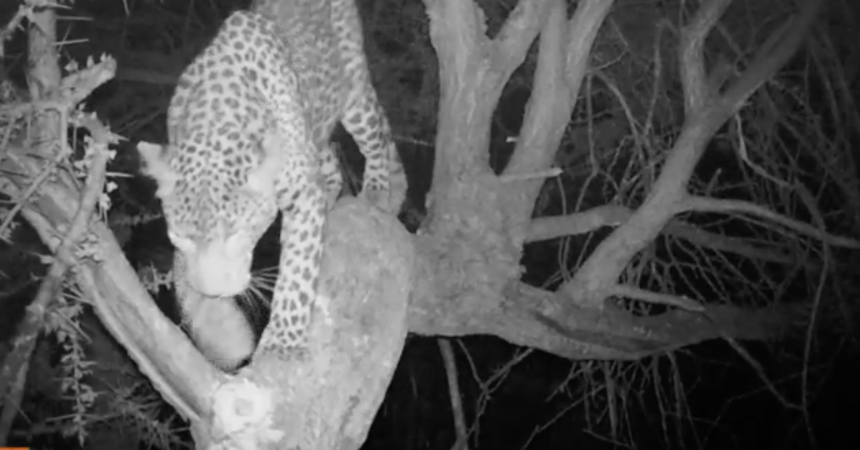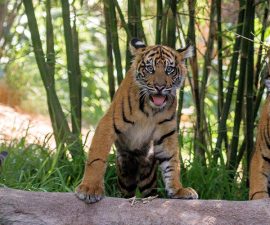San Diego Zoo Global Researchers Use Scents to Track Elusive Leopards New Program Aims to Estimate Wild Populations
A team of scientists from San Diego Zoo Global is using scents to lure notoriously camera-shy leopards into getting their photographs taken for research. The motion-triggered trail camera images are being used to identify individuals, inform population estimates in Kenya and educate future conservation strategies for the species.
“Tracking and counting individual leopards is vital to understanding the health of wild populations,” said Nicholas Pilfold, Ph.D., postdoctoral associate in Recovery Ecology, San Diego Zoo Institute for Conservation Research. “In many areas, information on population status is nonexistent. We are using remote cameras and pattern recognition to identify and track individuals based on the unique spot patterns of their coats. This information is then used to inform conservation management.”
A leopard & lioness are caught dismounting the same tree. #Caturday Poll: Who does it better? Info from the field: https://t.co/OPQn4pijMu pic.twitter.com/jT9fz6GTkd
— San Diego Zoo (@sandiegozoo) August 19, 2017
Of the “Big Five” African animals—including elephants, lions, rhinos and buffalo—most visitors to Africa never see leopards. Their elusive and shy nature also makes them one of the most difficult animals to track in the wild. Prior to deploying wildlife cameras in the field, researchers from San Diego Zoo Global consulted with animal care staff and leopard experts at the San Diego Zoo to gain insight about different scents that would attract leopards to their strategically placed, hidden cameras. Suggested attractants for leopards include fragrant herbs, scents like wintergreen and cinnamon, and well-known colognes.
“We are recording a variety of leopards on our cameras—including adult males, adult females, mated pairs and even cubs—which is essential for us to determine population health. We are still determining which scents work the best, and whether wild leopards respond in the same manner as leopards in zoos,” said Pilfold.
African leopards are listed as Vulnerable on the International Union for Conservation of Nature’s (IUCN) Red List of Endangered Species. Habitat loss and fragmentation, competition for prey, conflict with livestock and farmers, and hunting have reduced the number of leopards throughout Africa, although the total extent of this population decline is still unknown. San Diego Zoo Global is working closely with local partners including the Loisaba Conservancy, The Nature Conservancy in Africa, and the Mpala Research Centre on this new initiative to track and research leopard populations in the area, with the aim of preserving the species and maintaining healthy ecosystems.





